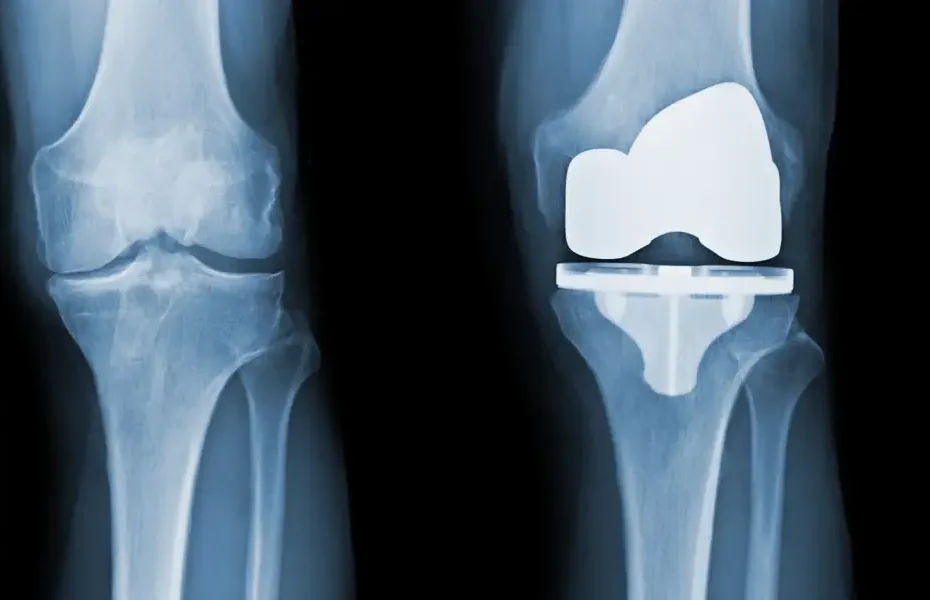In recent years, the field of orthopedics has witnessed remarkable advancements in joint replacement devices, revolutionizing the way we approach musculoskeletal disorders and injuries. Joint replacement surgeries have become increasingly common, offering relief to millions of individuals suffering from debilitating conditions such as osteoarthritis, rheumatoid arthritis, and other joint-related issues. The continuous evolution of joint replacement devices has not only enhanced surgical precision but has also significantly improved patient outcomes, leading to increased mobility and an overall better quality of life.
Historical Perspective:
The history of joint replacement dates back to the early 20th century when the first attempts were made to replace damaged joints with rudimentary prosthetic devices. Over the decades, surgical techniques and materials evolved, but it wasn’t until the 1960s that modern joint replacement surgery emerged with the introduction of prostheses made from materials like metal and polyethylene. Since then, the field has seen a continuous stream of innovations, with each passing decade bringing new technologies and materials that aim to mimic the natural function of joints.
Material Advancements:
One of the key drivers of progress in joint replacement devices is the continuous improvement in materials used for prostheses. Early joint replacements primarily utilized metal-on-polyethylene components, but concerns arose regarding wear and tear, leading to the development of more durable materials. The introduction of ceramic and metal-on-metal articulations aimed to address these issues, providing better longevity and reduced friction.
In recent years, advancements in biomaterials and 3D printing technology have opened up new possibilities for creating customized implants. Titanium alloys and cobalt-chromium-molybdenum alloys are now commonly used due to their excellent biocompatibility and mechanical properties. 3D printing allows for the creation of patient-specific implants, ensuring a more precise fit and better functional outcomes.
Robotic-Assisted Surgery:
One of the most significant breakthroughs in joint replacement surgery is the integration of robotic-assisted technology. Robotic systems provide surgeons with a high level of precision and accuracy during procedures, enhancing their ability to perform minimally invasive surgeries. These systems use preoperative imaging data to create a 3D model of the patient’s anatomy, allowing surgeons to plan the surgery in advance.
During the procedure, the robotic system assists the surgeon in executing the pre-planned steps with sub-millimeter accuracy. This level of precision not only improves the placement of the implant but also contributes to faster recovery times and reduced postoperative pain. Robotic-assisted surgery represents a paradigm shift in joint replacement, offering a more personalized approach and significantly improving patient outcomes.
Patient-Specific Implants:
Advancements in imaging technology and computer-aided design (CAD) have facilitated the development of patient-specific implants. Traditional joint replacement implants come in standard sizes, which may not always provide an optimal fit for every patient. Patient-specific implants are designed based on the individual’s anatomy, ensuring a more tailored and precise fit.
By utilizing preoperative imaging data, such as CT scans or MRIs, surgeons can work with manufacturers to create implants that match the patient’s unique anatomy. This not only improves the overall functionality of the joint but also reduces the risk of complications and implant failure. Patient-specific implants represent a move towards a more personalized approach to joint replacement, maximizing the benefits for each individual patient.
Smart Implants and Sensors:
The integration of smart technologies into joint replacement devices is another exciting frontier in orthopedic innovation. Smart implants are equipped with sensors that provide real-time data on the implant’s performance and the patient’s activity levels. This data can be transmitted to healthcare providers, allowing for remote monitoring of the patient’s recovery progress.

These sensors can also alert both patients and healthcare professionals to potential issues, such as implant wear or instability, before they escalate into more serious problems. The ability to gather continuous data on joint function post-surgery enables a proactive approach to patient care, facilitating timely interventions and adjustments as needed.
Biological Augmentation:
In addition to technological advancements, there is a growing interest in biological augmentation techniques to enhance the longevity and performance of joint replacement devices. Regenerative medicine approaches, such as the use of growth factors, stem cells, and tissue engineering, aim to promote tissue healing and regeneration around the implant site.
Biological augmentation holds the potential to improve implant integration, reduce inflammation, and contribute to long-term success. While these approaches are still in the early stages of development, they represent a promising avenue for further enhancing the outcomes of joint replacement surgeries.
Challenges and Future Directions:
Despite the remarkable progress in joint replacement technology, challenges remain. Implant longevity, wear resistance, and the prevention of complications such as infection are areas that continue to be actively researched. Additionally, the accessibility of advanced technologies like robotic-assisted surgery and patient-specific implants to a broader population is a consideration for the future.
As technology continues to evolve, the cost of these advanced procedures may decrease, making them more accessible to a wider range of patients. Moreover, ongoing research in materials science, biomechanics, and artificial intelligence will likely lead to further refinements in joint replacement devices, pushing the boundaries of what is currently possible.
Conclusion:
Advancements in joint replacement devices have transformed the landscape of orthopedic surgery, offering new hope and improved outcomes for individuals suffering from joint-related ailments. From the evolution of materials to the integration of robotics and smart technologies, the field has made significant strides in enhancing the precision, longevity, and overall success of joint replacement procedures.
As we look to the future, the intersection of technology, biology, and personalized medicine holds great promise for further improving the quality of life for those in need of joint replacement surgery. With ongoing research and collaboration between clinicians, engineers, and scientists, the journey towards more advanced and patient-centric joint replacement solutions continues, paving the way for a future where enhanced mobility and an improved quality of life are achievable for a broader spectrum of individuals.
